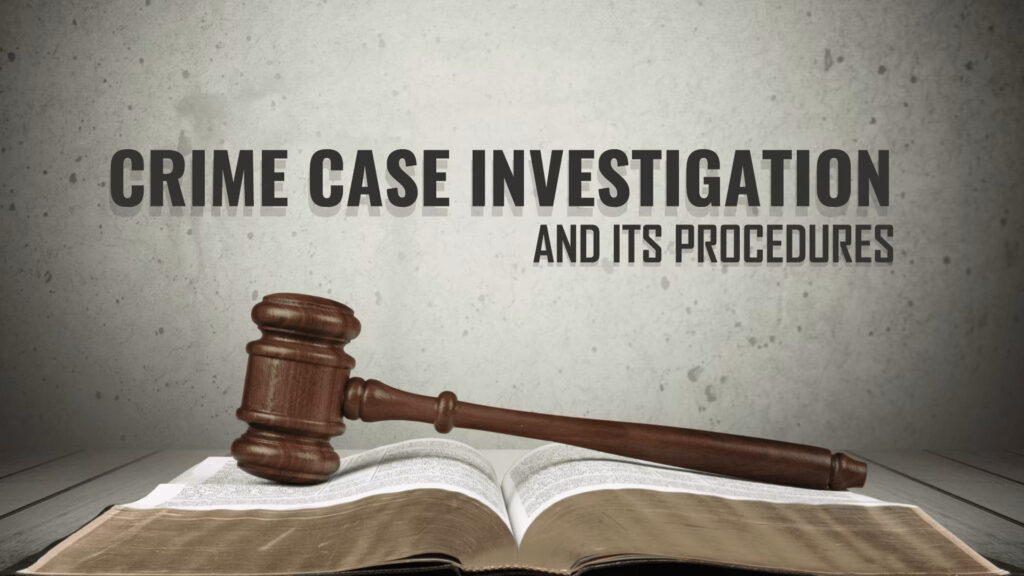
Criminal investigations are a critical component of the justice system.
They ensure that crimes are properly examined, evidence is preserved, and the right individuals are held accountable.
This step-by-step guide breaks down the investigation process—from the first report to court proceedings—so that you can clearly understand how law enforcement and legal authorities build a criminal case.
Whether you are a concerned citizen, a legal enthusiast, or someone seeking clarity due to personal involvement, this guide offers a structured overview of what typically happens during a criminal case investigation.
1. What Is a Criminal Case Investigation?
A criminal case investigation is the structured process by which law enforcement gathers facts, evidence, and testimony to determine whether a crime has occurred and who is responsible.
The goal is to build a strong, lawful case that can stand up in court.
Investigators work under strict legal frameworks to ensure rights are protected and justice is served.
Each step—from response to arrest to report submission—must follow due process, or the entire case may collapse.
This process is driven by facts, timelines, and legal thresholds.
It involves coordination among police, forensic teams, prosecutors, and sometimes intelligence units depending on the crime’s complexity.
2. Step 1: Crime Is Reported or Detected
Every criminal case begins either when a victim, witness, or third party reports the incident or when authorities independently detect a crime.
This could happen through:
- Emergency calls
- Anonymous tips
- Police patrol discovery
- Digital surveillance or alerts
Once a crime is reported, the station in jurisdiction registers a General Diary (GD) or, in serious cases, a First Information Report (FIR).
The nature of the crime determines the speed and manner of police response.
Violent or high-priority crimes are escalated immediately to investigative teams.
Prompt reporting significantly improves evidence reliability and suspect tracking.
3. Step 2: Initial Police Response and Scene Security
The first responders play a crucial role in preserving the integrity of the crime scene.
They:
- Secure the area with barricades
- Prevent unauthorized entry
- Provide medical assistance to victims (if any)
- Take initial witness statements
- Assess immediate threats
They relay all findings to senior officers or specialized crime branches.
A detailed log is maintained of all personnel who enter the scene.
Preserving the original state of the scene is critical—disturbance can compromise evidence.
4. Step 3: Evidence Collection and Documentation
Forensic officers and investigators gather physical and digital evidence.
Every item is tagged, logged, and photographed. Common types include:
- Fingerprints and footprints
- Blood, hair, or tissue samples
- Weapon fragments
- CCTV footage
- Digital devices
Each piece is sealed and sent to a lab for examination.
Chain of custody is documented to ensure admissibility in court.
Types of Evidence Collected
- Physical Evidence: Weapons, clothing, biological samples
- Digital Evidence: Phone records, GPS data, emails
- Documentary Evidence: Written threats, forged documents
- Testimonial Evidence: Statements from witnesses
Failure to properly collect or log evidence can lead to case dismissal.
5. Step 4: Suspect Identification and Questioning
Once leads are established, investigators identify suspects.
They use surveillance footage, tip-offs, past records, and witness sketches.
Suspects may be brought in for formal questioning.
This process is governed by legal safeguards and constitutional rights.
Rights of the Accused During Questioning
- Right to remain silent
- Right to legal counsel
- Right to be informed of charges
- No forced confession permitted
Violating these rights can render confessions inadmissible.
6. Step 5: Arrest and Filing of FIR or Chargesheet
If evidence supports it, the suspect is formally arrested.
Police then file or update the FIR with specific charges under relevant legal sections.
A chargesheet is prepared, summarizing:
- Offenses committed
- Evidence supporting claims
- Witnesses involved
- Role of accused
This marks the transition from investigation to legal proceedings.
Arrest must be based on probable cause, not suspicion alone.
7. Step 6: Case Building and Forensic Analysis
This phase involves detailed analysis of all collected evidence.
Forensic labs provide scientific reports, which can:
- Link suspects to crime scenes
- Confirm use of weapons
- Validate timelines
Police also re-interview witnesses and collect additional records.
Any contradictions or gaps are addressed before report submission.
The stronger and clearer the evidence, the more robust the case in court.
8. Step 7: Final Report Submission and Legal Proceedings
Once the investigation concludes, a final report is submitted to the magistrate.
This includes the chargesheet, forensic results, and all supporting documents.
The court then decides whether to proceed with prosecution.
If accepted, the trial phase begins.
Role of the Public Prosecutor
- Represents the state in court
- Presents evidence and examines witnesses
- Ensures the trial follows legal procedures
- Argues for conviction based on facts
The investigation formally ends when the case is handed over to the judiciary.
Final Thoughts
A criminal investigation is not just a legal formality—it’s a structured pursuit of truth.
Each step must be executed with precision to ensure that justice is served and rights are protected.
Understanding the investigation process helps individuals stay informed and better prepared during uncertain situations.
For those facing or suspecting criminal activity, seeking timely professional assistance can make a significant difference.
Cats Eye Detective Agency, a trusted name in private investigation services, offers discreet and thorough support in criminal case investigations.
Whether it involves background checks, evidence collection, or parallel inquiries, our team works with integrity and diligence to uncover facts that matter.
Connect with Cats Eye today to take the right steps toward uncovering the truth.
